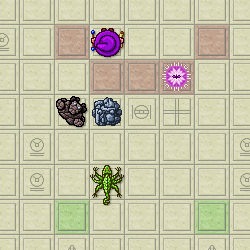In my previous two posts, I talked about the differences between designing two-player games and multiplayer games. Although I referred to games for three or four players in the latter’s title, everything I said there holds equally true in games for larger groups. However, I decided to create a separate post for big group games, because they have their own challenges on top of those of smaller multiplayer games. But whereas there’s binary division between two-player and multiplayer games, with fundamental differences between the two, here we see the problems appear and grow more gradually, as we increase the number of players. They may be minor, easy-to-deal-with issues in the case of a game for five, but become exponentially more serious as you add more – one of the main reasons there are few games on the market that can handle seven or more players.
The first problem is a pragmatic one: that of physical components. For most game designs, a certain amount of stuff is required for each player. Many games require each player to have their own set of pieces, for instance, which leads to the dual problem of manufacturing costs, and eventually (beyond about 10 players), running out of easily-differentiated colors to use. Even if this is not the case, game components such as a communal deck of cards or a supply of counters tend to run out if too many players are involved. From a publisher’s point of view, meanwhile, there is a problem of diminishing returns; assuming a game plays equally well with any number of players, providing enough components to play with five or six players instead of the usual four may sell more units… but moving from six to seven or eight may not. As such, decisions about the quantity of components to include are generally made based more on manufacturing practicalities; what will fit in that publisher’s standard box size, or how many cards can fit on a single press sheet.
If this were the only issue, however, players wishing to play a game in a bigger group could just buy two copies of it, or create their own makeshift pieces. The fact is, however, that most games have an ideal number of players and tend to deteriorate in enjoyability quite quickly when more players are added. There are a few reasons for this.
